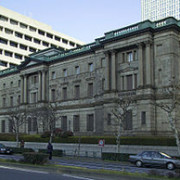Tag Archives | BOJ
Economics, Finance sector development, Governance and public sector management
 Economics
Economics

Assessing the BOJ’s yield curve control policy

The Bank of Japan (BOJ) announced in September last year that it would be switching the focus of its quantitative easing program from monetary base targeting to controlling the shape of the yield curve (Bank of Japan, 2016). A brief comparison of the two frameworks is as follows. The previous monetary easing framework, Quantitative and Qualitative Monetary Easing (QQE) with a Negative Interest Rate, set out three policy dimensions: quantity, quality, and interest rates.
Kuroda should rethink the quest for 2 percent inflation

The Bank of Japan had a difficult start into 2016. The latest data shows that inflation in the last quarter of 2015 was lower than expected. Furthermore, doubts are increasing about the recovery of the economy. At the end of January, BOJ Gov. Haruhiko Kuroda surprised markets by announcing negative interest rates for certain commercial bank deposits at the BOJ. On March 1 Japan started to sell government bonds with a yield below zero. Market observers expect even bolder steps later this year.


Search
Subscribe / Connect to Asia Pathways
Subjects
- Accelerating Progress in Gender Equality
- Addressing Remaining Poverty and Reducing Inequality
- Agriculture and natural resources
- Capacity development
- Climate change
- Economics
- Education
- Energy
- Environment
- Finance and Innovation
- Finance sector development
- Gender
- Globalization and Economic Stability
- Governance and public sector management
- Health
- Industry and trade
- Information and Communications Technology
- Infrastructure
- Making Cities More Livable
- Miscellaneous
- Population
- Poverty
- Private sector development
- Regional cooperation and integration
- Sanitation
- Social development and protection
- Strengthening Governance and Institutional Capacity
- Subjects
- Transport
- Uncategorized
- Urban development
- Video Blog
- Water
Recent Posts
- From Crisis to Resilience: The Evolution of the Banking Sector in Asia and the Pacific
- Tariffs on the Table: What Could Be Asia’s Next Move?
- Investing in Childcare a Win for Women and the Economy
- Flush and Flourish: Upgraded Toilets Can Transform Lives in Rural Asia
- New Ways for Climate Finance and Development in Asia and the Pacific




Recent Comments